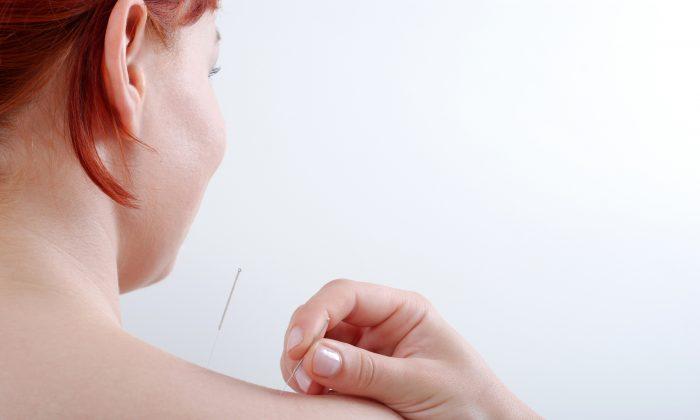Pain and stress often go hand in hand. Many of us have stressful lives filled with a full-time work schedule, taking care of children, cooking for the family, extracurricular activities, and so on.
With all this business, we may not be aware that we tend to sit and move our bodies with repetitive motions that create what Acupuncture Physical Medicine (APM) calls holding patterns.
Holding patterns occur when our body is constantly fixed in a position, for example, when we sit at a desk for long periods of time, we may slouch or hunch. With this position constantly being held each day, we unknowingly create a holding pattern. Holding patterns result in tight, tender points in various places in the body, along the chest, abdomen, shoulders, and along the spine.
How It Works
APM begins by relaxing the patient and then addressing the tight, tender points throughout the body. These tender points lie in the fascia, tissue that wraps around muscle and connects to the organs.The APM practitioner applies pressure to the acupuncture points that connect the energetic pathways, or meridians, throughout the body, relaxing the person. Then the practitioner assesses for the tender points through physical palpation (touching the body), while communicating with the patient as locations of the tender points are found.
People who hunch over their desks usually have tender points on the shoulders, neck, and along the spine, so the APM practitioner will first find these points and look for points farther away from the center of the body, on the hands, arms, legs, and feet, to needle and release the tension in these points.
Next, the tender points are treated directly, with an initial insertion at the tender point. The needle is then thrust up and down in, slowly at first and then faster to make the tight point release and relax. This creates a myofascial release—release in the connective tissue covering the muscles—relative to the tense point.
Complementary Treatments
In addition to APM, an acupuncture practitioner may also use other methods of treatment, such as cupping or Gua Sha, sucking and scraping methods, that also loosen tight muscles and release heat in the body.As with all Chinese medicine, the more active a role patients play in their healing, the more effective the treatments will be. Practices such as qigong, which also works directly with the meridians, yoga, or meditation techniques, will help reduce stress along with acupuncture treatment.


Friends Read Free